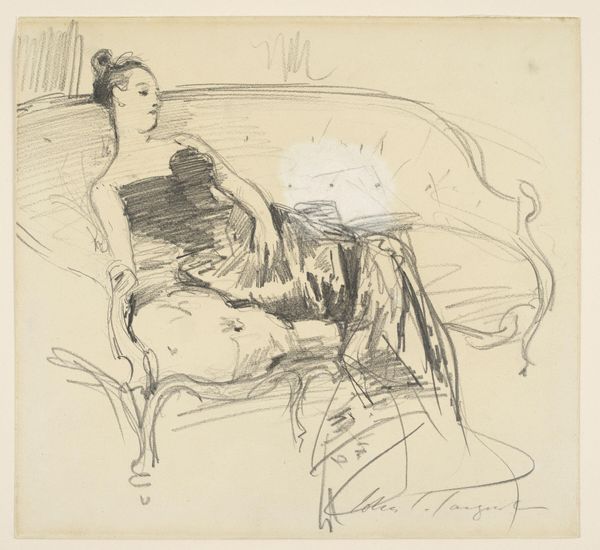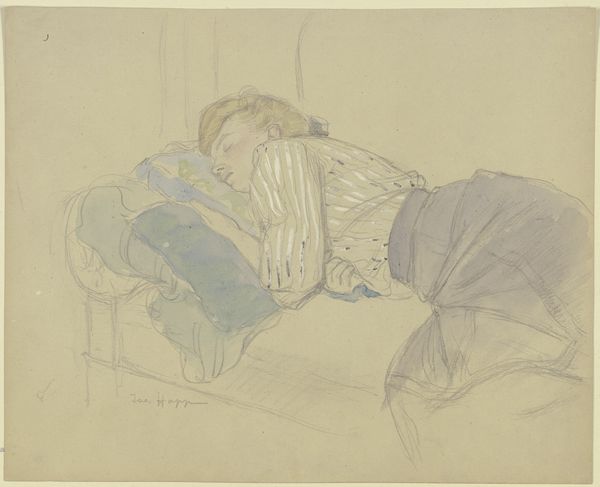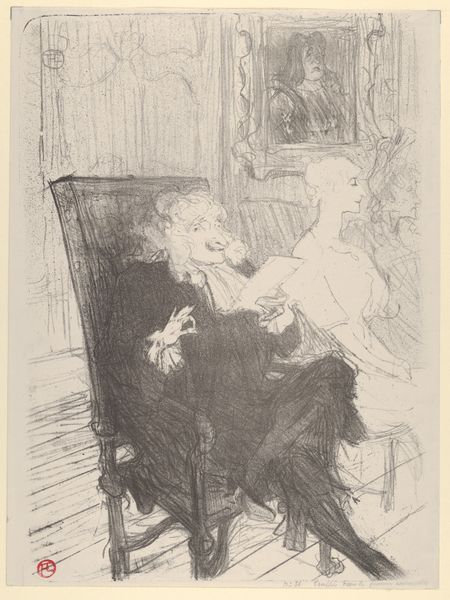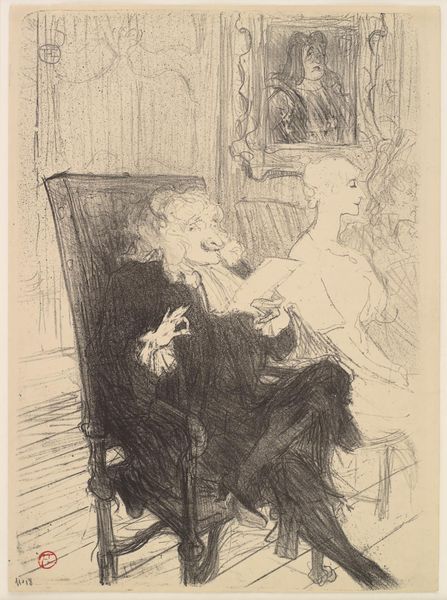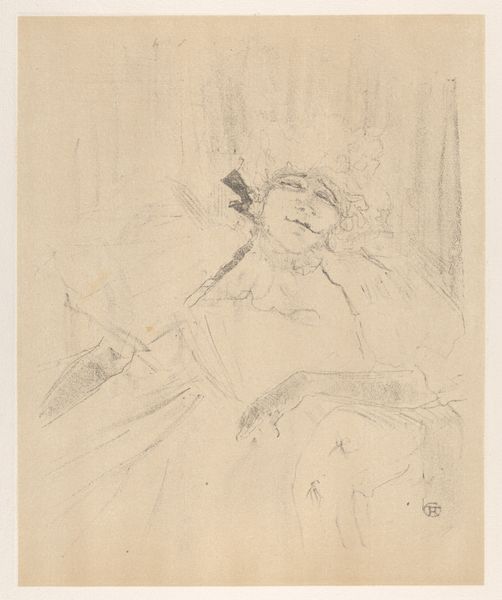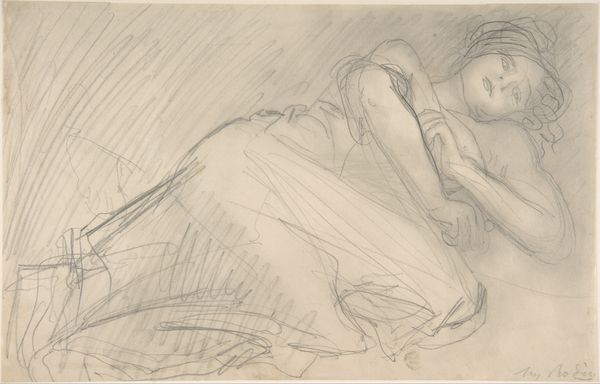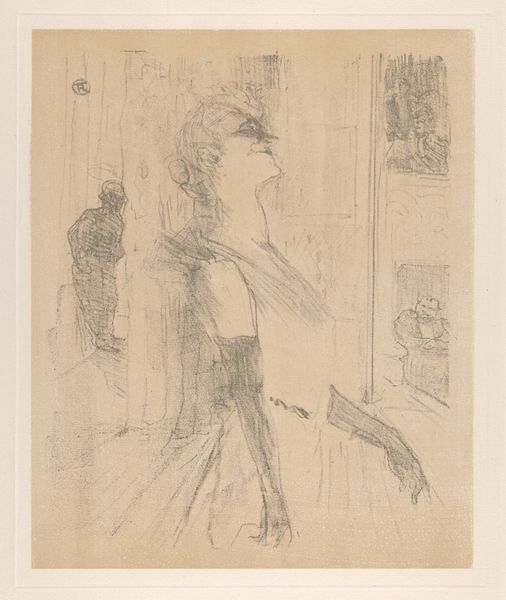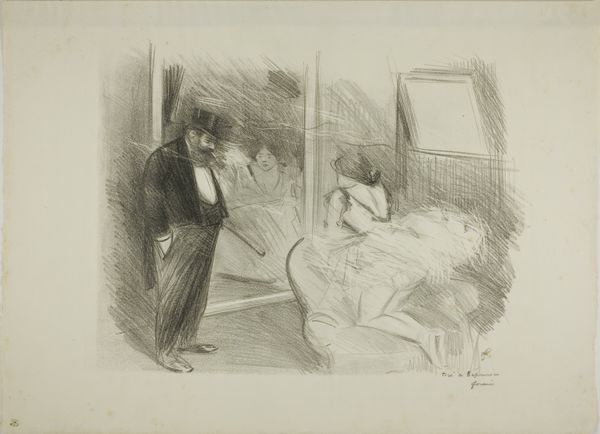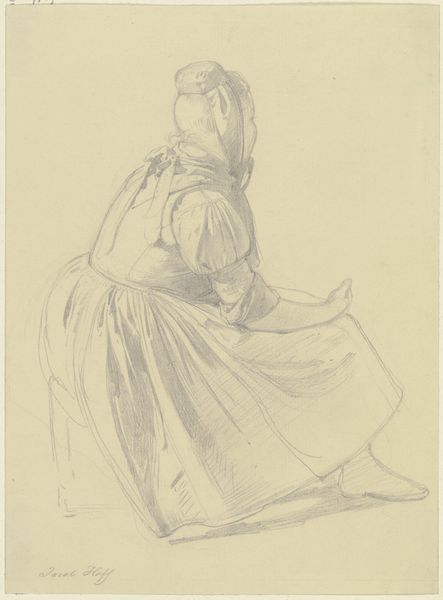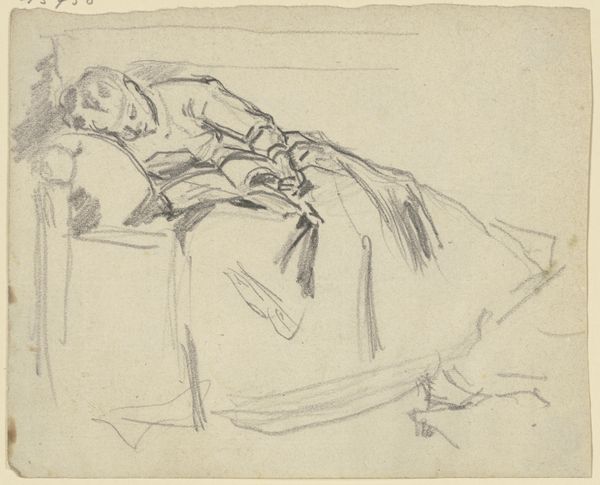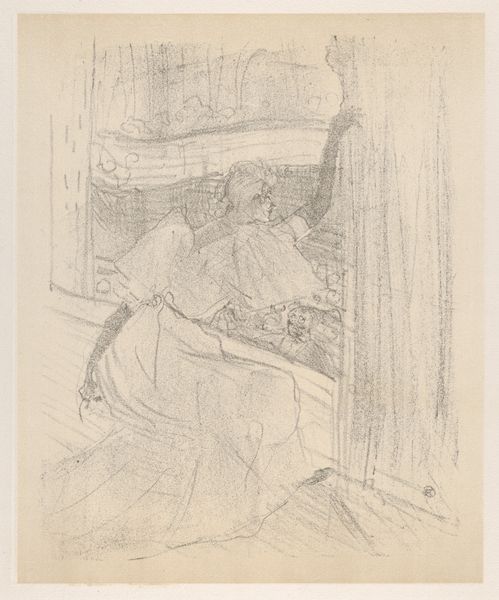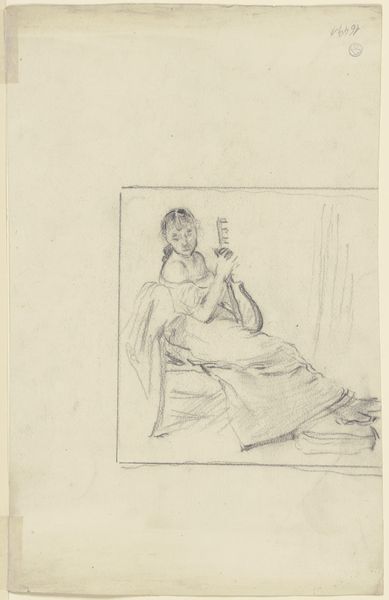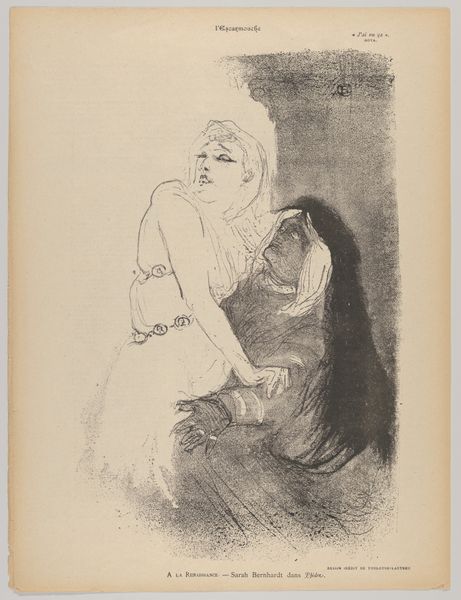
drawing, pencil
#
portrait
#
drawing
#
16_19th-century
#
figuration
#
romanticism
#
pencil
Copyright: Public Domain
Curator: Pierre-Georges Jeanniot, a name primarily known for his illustrations, seems to capture a fleeting moment here with "Rokokodame in einem Sessel sitzend, Blick in den Spiegel"—or "Rococo Lady Sitting in an Armchair, Looking in the Mirror." It’s a delicate drawing rendered in pencil. Editor: Delicate is the word. My immediate sense is one of understated elegance, and even introspection. There’s something so graceful and still in her posture; the use of line really evokes the textures of fabric and the volume of her gown. Curator: The “Rococo Lady” conjures up familiar images of the aristocracy and a time when material excesses signified influence and success. While Jeanriot worked later, this recalls paintings by Fragonard or Boucher. Think about what a society values—or at least chooses to display. Her fashion and posture communicate a story as much as a moment. Editor: Absolutely. And those flowing lines representing her gown also represent considerable labor. Someone spent countless hours creating that fabric and that dress. This drawing invites us to think about the whole network of makers supporting her lifestyle, even if they aren’t explicitly represented. You have to wonder, were objects of status or tools of oppression for those whose exploitation facilitated their production? Curator: That question seems very alive, doesn’t it? Because Jeanriot’s illustration walks this very tightrope: it romanticizes the figure and allows for considerations on labour. Her very stillness seems loaded, particularly if you know what followed for many like her... Editor: It’s hard to ignore the context. Still, seeing the delicate hatching and varied pressure he used with the pencils makes you think about craft, too. What’s usually deemed high art is, in effect, extremely reliant on "mere" technical skill and often devalued, invisible labor. Curator: By looking at the material of this drawing then, we begin to unpack the complexities of a historical period. Editor: Precisely, it goes beyond just the image to explore underlying social fabrics. That, in the end, becomes much more engaging.
Comments
No comments
Be the first to comment and join the conversation on the ultimate creative platform.
